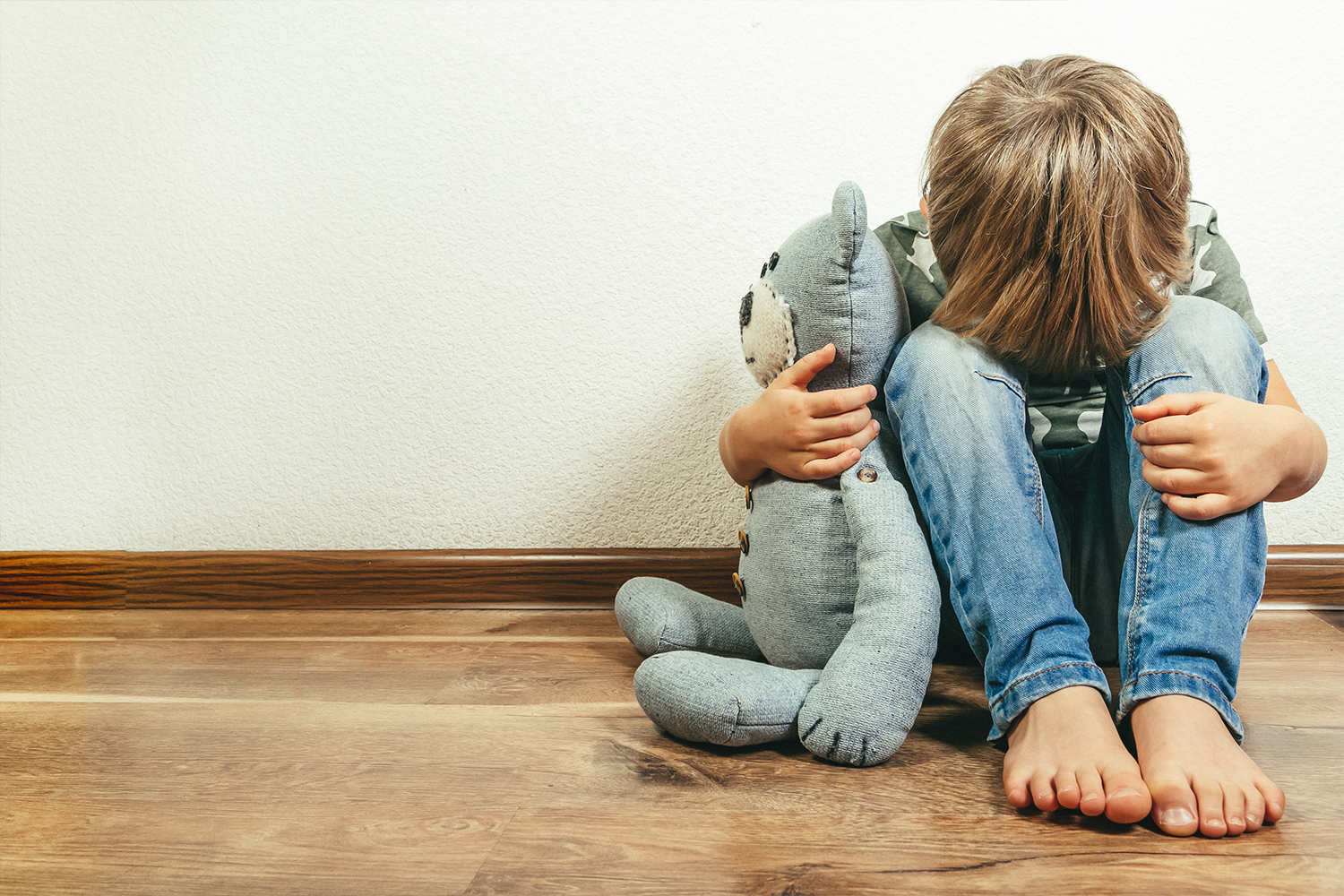Grounding Techniques: Easy Skills to Help Your Child Manage Their Anxiety
Samantha Scalabrino, M.A.

Anxiety is an excessive worry about a real or perceived threat that can result in avoidance behaviors and physical reactions. It differs from fear in that fear is an appropriate response to an immediate threat, whereas anxiety is usually an anticipation of something that has not yet happened. An anxious brain acts similarly to one acting from fear. It activates our “fight or flight” response when threatened, signaling our body to get ready to respond appropriately to the danger. Our heart rate and blood pressure increase, and our breathing becomes faster. Unfortunately, it can be difficult to calm down and think rationally about what is going on.
Grounding skills are techniques used to distract an anxious mind and calm the body when experiencing a trigger. The goal is to refocus the mind long enough so that the body has a chance to return to a relaxed state (normal breathing pattern, heart rate, blood pressure, etc.). The skills are easy to learn and can be practiced anywhere, which makes them especially helpful for children.
I have divided examples of grounding techniques* into multiple categories: ones that engage the senses, ones that focus on the physical presence of the body, and ones that concentrate on concrete details and facts. The mind can only focus on one thing at a time; it cannot focus on the anxiety trigger while also engaging in these exercises. Grounding skills allow a person to be completely present in the moment. This concentration will help to feel in control of one’s feelings and reactions instead of being dragged into the subconscious fight or flight response.
Engaging the Senses:
- 5-4-3-2-1: I have found this grounding technique to be an absolute favorite among the kids with whom I work. It engages all five senses, is straightforward and easy, and is similar to an “I spy” game. Have your child look around the immediate area and identify and describe:
- 5 things they can see (what color, shape, size is it?)
- 4 things they can touch (what does it feel like?)
- 3 things they can hear (can they even hear their own breathing?)
- 2 things they can smell (or could potentially smell based on the items in the room—for example, if there is a closed bottle of hand sanitizer in the room, it would have a strong smell if they were to squeeze some into their hands but they do no necessarily have to do so)
- 1 thing they can taste (for example, did they recently have a snack or brush their teeth that has a lingering taste?)
Encourage the child not to rush through this activity; it should take a few minutes.
- Scent: Use the child’s sense of smell to interrupt their focus on what is making them anxious. Lotions and essential oils are useful tools for this intervention. Lavender and chamomile can be very calming scents, while citrus and mint are more awakening. Vicks and Halls also make sticks/bottles of non-medicated menthol vapors that smell very
strong and can easily fit in a pocket to always have on hand. Help your child find a scent that they enjoy and will distract them from their anxious thoughts. - Sound: Encourage your child to sing a favorite song or state a helpful phrase/mantra/prayer out loud or quietly in their mind several times. This phrase can even be a silly tongue-twister.
- Taste: Chewing or sucking on sour candies can help children to focus on something other than their anxious thoughts.
- Touch: Give your child something cold to hold for a few seconds, like ice. The shock of the temperature change and sensation of it melting over their skin helps ground the child in the present moment.
- Visual: A calming jar is a fantastic tool to use to help children focus on the present moment. The movement of swirling colors and glitter, or other objects inside, makes for a calming sensation. Have your child help you make their calm jar so it will be meaningful to them. There are many online resources to demonstrate how to make one. Keep it in an accessible place for times of stress.
- Fidgets: Fidgets can engage multiple senses at once. By spinning, clicking, chewing, rolling, or squishing these objects, a child focuses on the activity and not the anxiety trigger.
Body Awareness:
- Body Scan: A great way to feel present and shift attention away from anxiety triggers is to understand how one feels physically at that moment. Help your child to do this activity slowly and deliberately, experiencing how each part of their body feels, working from their toes up to their head. An internet search for “Grounding Body Scan” will provide you with many examples of scripts and videos that you can use to help guide your child through this exercise.
- Deep breathing: When children are told simply to “take deep breaths” to calm down, they may have difficulty taking them at the correct speed. There are a seemingly endless number of different techniques to help guide them, such as “square breathing” or “Lazy 8 breathing” in which they use their fingers to trace a pattern while breathing in and out. Or they can use their imagination to pretend they are blowing the seeds off of a dandelion flower or that they are a dragon blowing out a stream of fire. I also like using a simple exercise of asking the child to place one hand on their chest and one hand on their belly as they take their deep breaths. By physically touching their body in this way they become better aware of their breathing rhythm.
- Bubbles: Blowing bubbles also encourages deep breathing. I use this technique when a child refuses to try taking deep breaths. By breathing strong enough to make a bubble, but not too strong enough to break it, the child engages in the perfect rhythm for relaxation—and they have fun while doing it! Encourage your child to pop the bubbles, too. Not only is this entertaining, but it provides a sensory component (touch, sight, sound), which is grounding in and of itself.
Focusing on Details:
- Mental Games: A great way to distract your child from what is causing them anxiety is to ask them to concentrate on concrete details that will take a bit of thinking power. For example, ask them to say the alphabet backwards. Most elementary school aged kids can easily rattle off the alphabet forwards, but they will have to concentrate to do it backwards. This focus gives the brain a chance to shift away the trigger, which in turn allows their body a chance to calm down, as well. Other examples are to ask the child to see how many blue (or other color) things are in the room, to list off all of their favorite movies or favorite artist’s songs, counting backward from a certain number, and to list how many ice cream flavors they can think of. You can also show the child a picture from a magazine for about 10 seconds, flip it over, and then ask them to describe it in as much detail as they can.
- Facts: Your child can complete 8-10 factual sentences based on the moment, thereby helping their mind to become reoriented to their surroundings and not what is causing them anxiety. I recommend writing these on a notecard or piece of paper if they can read. For example:
My name is _________.
My birthday is _________ and I am currently _________ years old.
Today is __________.
The season is __________.
The weather currently is _________.
The class I am in right now is __________.
My teacher’s name is _________.
There are ________ (number) people in my class right now. ______ are absent.
I am wearing the colors _________.
Not all of these ideas may be a fit for your child. Try them out when your child is not anxious to discover which ones they like the best. And practice makes perfect! It can be difficult to remember to use one’s coping skills during a stressful moment, especially for a child. Consistently help your child practice these skills when they are calm. Then, when they are anxious, they have a better chance of remembering what they have learned. Write the techniques on a notecard or piece of paper that they can easily access (tucked in their backpack, taped on their bedroom wall, placed in their school desk). Also let your child’s helpers (teachers, coaches, other family members) know what your child has worked on so that they can prompt your child to do the exercises when needed, as well. Eventually, the child will remember to use their grounding techniques in the moment themselves.
*Please make sure to not engage in any of these interventions if the child has a known adverse reaction (such as allergy to scents or food), develops an adverse reaction, or is unable to use the items properly.



